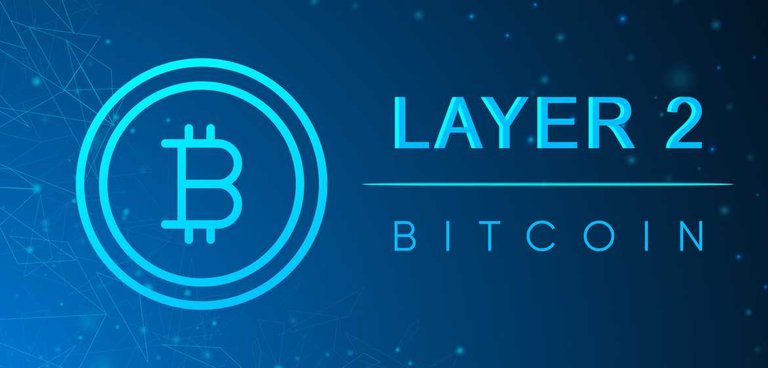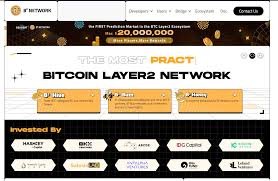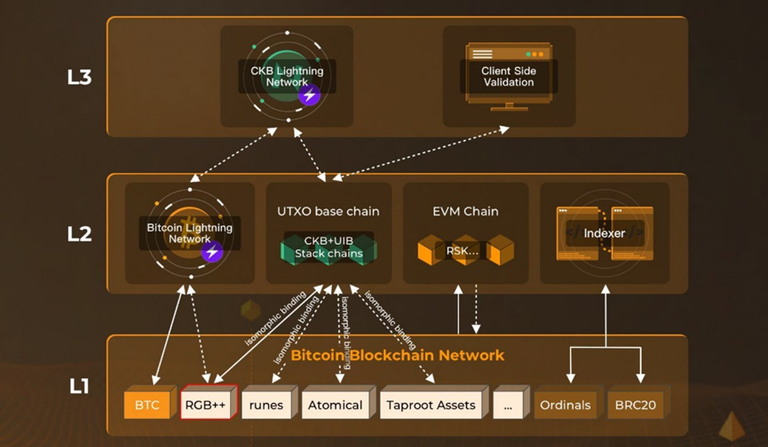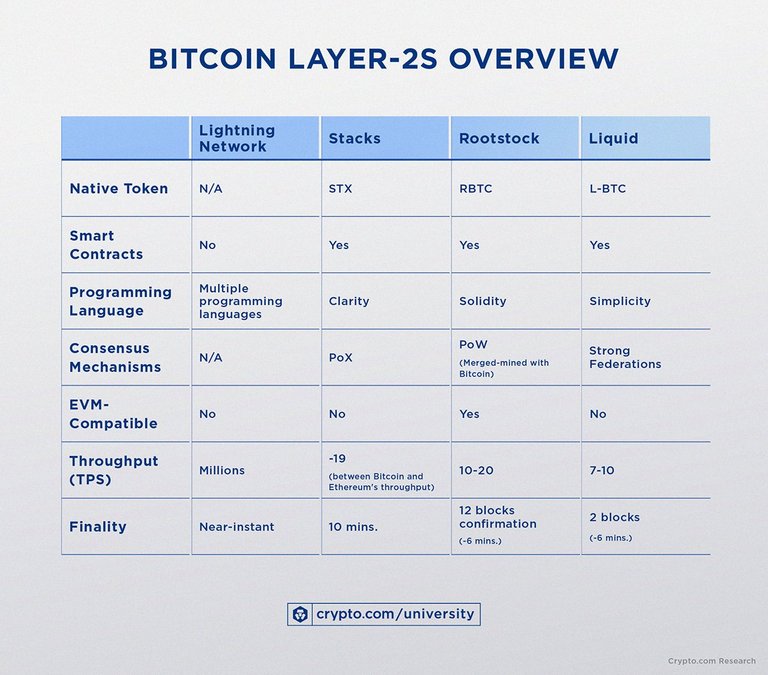
For years, Bitcoin has been primarily seen as a store of value, a digital gold that long-term holders accumulate and safeguard. However, the emergence of Layer-2 (L2) solutions is beginning to reshape Bitcoin’s role in the financial ecosystem. By enhancing programmability while preserving Bitcoin’s unparalleled security, these solutions could catalyze a new wave of decentralized finance (DeFi) adoption within the Bitcoin network.
The Rising Growth of Bitcoin Layer-2 Solutions
The Bitcoin Layer-2 sector has witnessed remarkable growth in recent years, as developers seek to build financial applications that operate on Bitcoin’s base layer without compromising its core principles.
A November 2024 report by Galaxy Digital highlighted this rapid expansion:
- The number of Bitcoin L2 networks surged from just 10 in 2021 to 75 by 2023.
- Over 36% of all Bitcoin Layer-2 venture capital funding was secured in 2024 alone.
- By 2030, more than $47 billion worth of BTC is projected to be bridged into Bitcoin L2 ecosystems, indicating a major shift in how Bitcoin is utilized.
These figures underscore the growing conviction that Bitcoin is evolving beyond passive investment into an active financial ecosystem.
Early Bitcoin Adopters Slow to Embrace Layer-2 Solutions
Despite the technological advancements, many early Bitcoin adopters remain hesitant to engage with Layer-2 solutions.
Willem Schroé, CEO of Botanix Labs, pointed out that most Bitcoin "hodlers" have historically focused on long-term holding rather than exploring yield-generating opportunities. However, Bitcoin L2 solutions are changing this paradigm:
“Bitcoin ‘hodlers’ can now earn passive yield without selling their BTC,” Schroé explained. “Through L2 programmability, Bitcoiners can engage in DeFi-like ecosystems—lending, staking, or liquidity provisioning—while still keeping their assets secured on Bitcoin’s base layer.”
However, the complexity of Bitcoin L2s remains a hurdle.
Rena Shah, COO of Trust Machines, emphasized that for wider adoption to occur, the Bitcoin community must first address the core needs of Layer-1 (L1) users.
“Many have been in ‘hodl mode’ for years, seeing Bitcoin as a hedge against inflation. But Bitcoin L2s are now proving that Bitcoin isn’t just a passive asset—it can be productive.”
The challenge lies in bridging the knowledge gap, making L2 solutions intuitive and accessible to long-time Bitcoin holders.

Bitcoiners Will Put Their BTC to Work in 2024
As Layer-2 infrastructure matures, Bitcoin holders are expected to leverage their BTC more actively.
According to DeFiLlama, Bitcoin’s total value locked (TVL) in DeFi currently stands at $6.618 billion, a number that experts predict will rise significantly as Bitcoin-native DeFi applications gain traction.
Schroé highlighted the untapped potential of Bitcoin capital, noting that for years, trillions of dollars in Bitcoin remained dormant due to a lack of efficient, native financial utilities.
“Bitcoin has long been perceived as a store of value, with most holders simply HODLing. But Bitcoin L2s are now unlocking yield opportunities without requiring users to migrate to Ethereum or other chains.”
New solutions will allow BTC to generate yield directly within Bitcoin’s infrastructure, enabling lending, staking, and liquidity provisioning—all while preserving Bitcoin’s security model.
“This evolution lets Bitcoiners put their assets to work without losing exposure to the asset they trust most,” Schroé added.
Advancing Bitcoin Layer-2 Security and Scalability
One of the biggest developments in Bitcoin L2s is the advancement of smart contract capabilities.
Kevin Liu, co-founder of GOAT Network, explained that BitVM, a novel Bitcoin-native smart contract standard, is poised to significantly enhance Bitcoin’s programmability and scalability.
“BitVM smart contracts enable trust-minimized Layer-2 networks that inherit Bitcoin’s native security,” Liu noted.
By using canonical bridges, fraud proofs, and zero-knowledge proofs (ZK-proofs), Bitcoin Layer-2 solutions can facilitate secure asset transfers without relying on centralized intermediaries.
GOAT Network recently launched the BitVM2 Playground, allowing developers to test smart contract functionality before full mainnet deployment later this year.
Meanwhile, Bitlayer’s Finality Bridge is set to introduce trust-minimized asset transfers, allowing Bitcoin funds to be securely locked in smart contract-governed addresses, reducing reliance on third parties.
“Unlike Ethereum’s DeFi sector, which thrived on fresh capital inflows, Bitcoin’s financial layer is designed to activate existing Bitcoin wealth without requiring new liquidity,” Schroé explained. “This is why trust-minimized approaches are gaining momentum.”
With security and decentralization at the forefront, these advancements could reshape Bitcoin’s financial ecosystem.

Bitcoin’s Financial Layer Is Poised for Transformation
Historically, Bitcoiners have been skeptical of DeFi, wary of security risks and speculative ventures. However, 2024 may provide new incentives for engagement.
Brian Mahoney, co-founder of Mezo, believes that the maturity of Bitcoin Layer-2s has paved the way for decentralized applications (dApps) focused on Bitcoin liquidity.
- Mezo’s Bitcoin lending model allows BTC holders to earn yield by staking BTC as collateral, providing a secure and scalable lending market.
- Bitcoin staking platforms like Solv Protocol are expanding BTC liquidity across multiple chains, helping retail investors accumulate more Bitcoin through lending and staking mechanisms.
Rena Shah highlighted the rise of a new Bitcoin user persona—the "accumulator":
“We’re seeing more Bitcoin holders willing to take moderate risks to acquire additional BTC. They are using Bitcoin L2 solutions to borrow stablecoins, farm yield, and ultimately increase their Bitcoin holdings.”
Meanwhile, Granite Finance is facilitating BTC-backed stablecoin borrowing, allowing users to leverage stablecoins for farming in other DeFi markets, reinvesting profits back into Bitcoin.
While speculative trading still plays a role, industry experts believe the next adoption wave will be fundamentally different.
“The future of Bitcoin Layer-2s isn’t about speculation,” Schroé emphasized. “It’s about unlocking Bitcoin’s financial potential while staying true to its principles of security, decentralization, and sovereignty.”

2025: The Year Bitcoin Maximalists Embrace DeFi?
Bitcoin maximalists have long dismissed DeFi as risky and centralized, but 2025 could mark a shift in sentiment.
With security-first solutions gaining traction, BTC holders now have access to yield-generating opportunities without sacrificing the core principles that made Bitcoin dominant.
If Bitcoin Layer-2s continue evolving, we may witness a quiet but significant transformation in how Bitcoin is utilized, invested, and integrated into decentralized finance.
For now, the Layer-2 revolution is underway—and its success will depend on how well it balances security, accessibility, and financial innovation within the Bitcoin ecosystem.